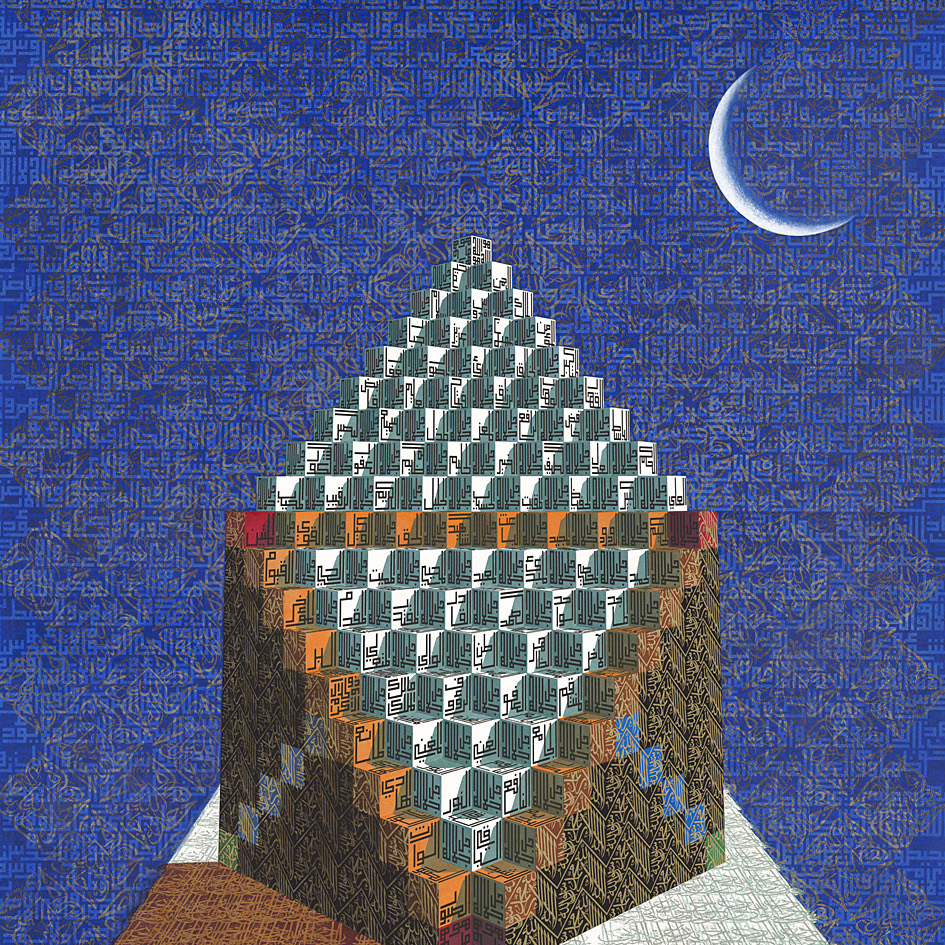Abu Dhabi Art - blending tradition with modernity in the heart of the UAE
Since its launch in 2009, Abu Dhabi Art has further helped transform the UAE into not only a hub for contemporary Middle Eastern art, but for international art as well in the MENA region. With an ever-expanding list of programmes, events, activities, and participating galleries to be showcased on the idyllic Saadiyat Island, as well as throughout the emirate, the fair seems ever-committed to firmly rooting itself within the cultural fabric of the Middle East at large. To find out about what it has in store for its sixth edition in November 2014, I spoke with Alanood Al Hammadi of the fair’s Senior Exhibitor Relations department.
Since the fair’s inception in 2009, in what ways would you say Abu Dhabi Art has evolved?
Abu Dhabi Art started in 2009 at the Emirates Palace. We moved to Saadiyat Island in 2011, and it was really an exciting move, as the island is going to be the future home of three museums: the Louvre (opening next year), the Zayed National Museum, the Guggenheim Abu Dhabi … Everything is going to be evolving around the island at the Manarat Al Saadiyat, the exhibition centre in the Saadiyat Cultural District. We host a lot of permanent and temporary exhibitions, and during Abu Dhabi Art there will also be an exhibition called Seeing Through Light organised by the Guggenheim Abu Dhabi, which will showcase works by 18 artists (for three months) that have been acquired by the museum.
We’re still continuing with the Abu Dhabi Art concept of showing works from 50 galleries. It’s really exciting that all these different galleries – from the US, Europe, the Middle East, and East Asia – will be coming to Abu Dhabi to present modern, contemporary, and design-related works. Everyone will be able to find something they like.
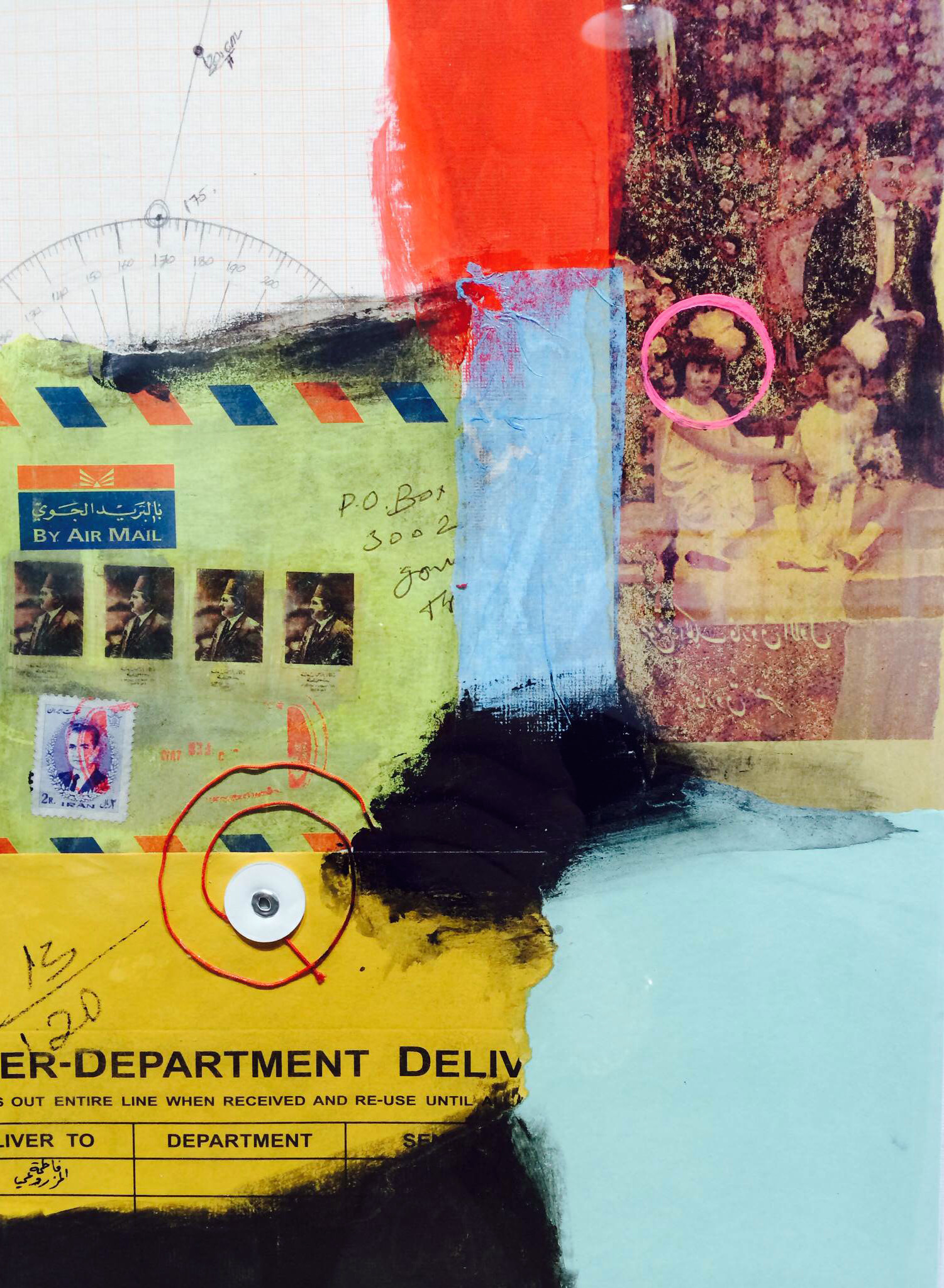
Fatema AlMazrouie - Untitled (from the ‘Nostalgia’ series; courtesy Salwa Zeidan Gallery)
How does Abu Dhabi Art position itself vis-à-vis other art fairs in the MENA region, such as Art Dubai and the Sharjah Biennial? What can audiences expect to witness at Abu Dhabi Art that they can’t elsewhere?
Abu Dhabi Art brings a beautiful blend between the past and the present. We’re not only focused on the commercial side; we have really big programmes including performances, works for the public and the community … These programmes work beautifully by taking elements from the past and from tradition and mixing them in modern and contemporary ways. For example, we have the Durub Al Tawaya programme; ‘durub al tawaya’ means ‘pathway of underground water’, and we’ve chosen this name as old-time travellers used to search for the source of water. Here, we have the source of art and culture, which we will present beautifully. This platform, which focuses on the art of performance and was introduced to the Abu Dhabi Art programme last year, transformed public buses into moveable artworks blending contemporary art and calligraphy, and also had elements of performance within the buses and at the stops, which were very unique ways to encourage the public to get involved, and introduce Abu Dhabi Art to the wider community of the city. For 2014, Durub Al Tawaya will return, but with a new theme and programme.
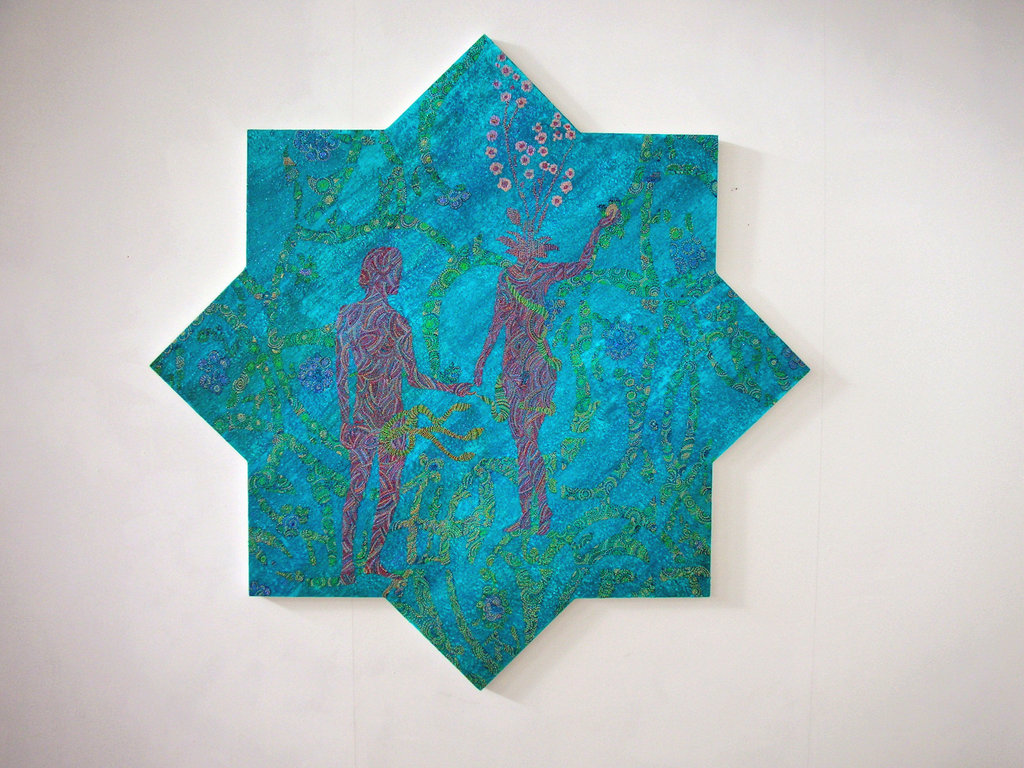
Samira Hodaei - Trading Places (courtesy AB Gallery)
Tell me a bit about some of the galleries that will be participating in this year’s edition. Are there any in particular you’re excited about?
We have a section called Bidaya – Arabic for ‘beginning’ – in which we introduce one young emerging gallery. In the main exhibitor section, the requirement for galleries is that they have been in existence for three or more years. For Bidaya, we make an exception for one gallery we believe warrants an opportunity to be shown alongside amazing established galleries. This year, we are very excited to have a gallery from New York: Taymour Grahne Gallery. We have a strong return rate from the galleries this year; the great thing about working with around 50 galleries is that we have great relationships with them. For the sixth edition we also have new galleries, and we can see a nice balance of galleries from Europe, the Middle East, and South and East Asia.
Abu Dhabi Art was established in 2009 to be a part of the cultural movement happening within the city and the region. New galleries are also opening in the UAE … it’s growing, and the people here are really excited about the development of arts and culture
This year’s edition will see the introduction of Beyond, which you previously mentioned is expected to be the highlight of the fair. Which artists have been commissioned to produce the large-scale installations, and where can we expect to see them?
We haven’t announced the details yet. For Beyond, we will feature one commercial space that doesn’t fit within a booth space. We will also have installations indoors and outdoors. Beyond is another project we’re using to reach out to the city; we will have beautiful installations and sculptures in Abu Dhabi. We’ll be announcing the lists of participating artists and galleries soon.
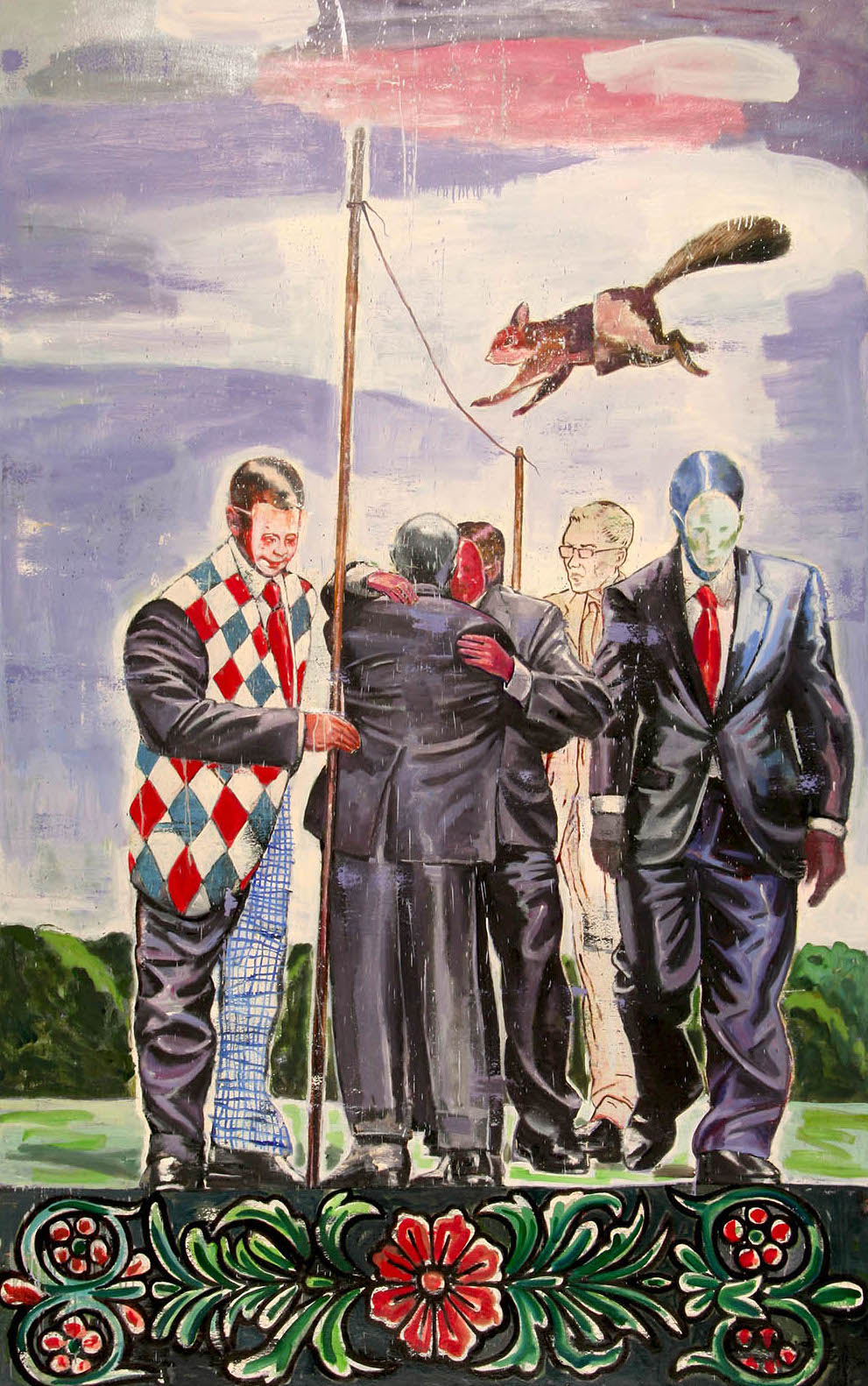
Nicky Nodjoumi - High Jump (courtesy Taymour Grahne Gallery)
Are there other programmes and features we’ll be seeing this year that we didn’t in previous editions of the fair?
We’re continuing with most of the programmes we began last year, such as the design programme that includes the Wings competition. We’ve asked young Emirati designers and artists to take part in this competition to design our logo, and the winning design will be printed on our merchandise in our store in Manarat Al Saadiyat. We also started working with UAE designers last year to produce prototypes of their designs to be presented. Last year, we had a structure designed by a Japanese architect, Shigeru Ban, which featured a nice blend between cultures that was beautifully done, and we also hosted a programme within it. This year, we’ll be commissioning another architectural project, in addition to featuring graphic design, as well as furniture in the commercial sector.
In recent years, we’ve been witnessing heightened activity and investment with respect to arts and culture throughout the MENA region; Qatar, for instance, is expected to spend in the realm of tens of billions in the coming years on art-related activities alone. To what, in your opinion, can we attribute this recent excitement?
It’s beautiful that art and culture are part of the community and history here. In 2007, the Abu Dhabi Government initiated the process to establish the three museums in the Saadiyat cultural district to complete the cultural ecosystem here. Abu Dhabi Art was established in 2009 to be a part of the cultural movement happening within the city and the region. New galleries are also opening in the UAE … it’s growing, and the people here are really excited about the development of arts and culture. Abu Dhabi had the first museum in the UAE; soon, the Guggenheim Abu Dhabi will focus on modern and contemporary art, and the Louvre Abu Dhabi on international art. They’re all different, and it will be great to have them in the Middle East.
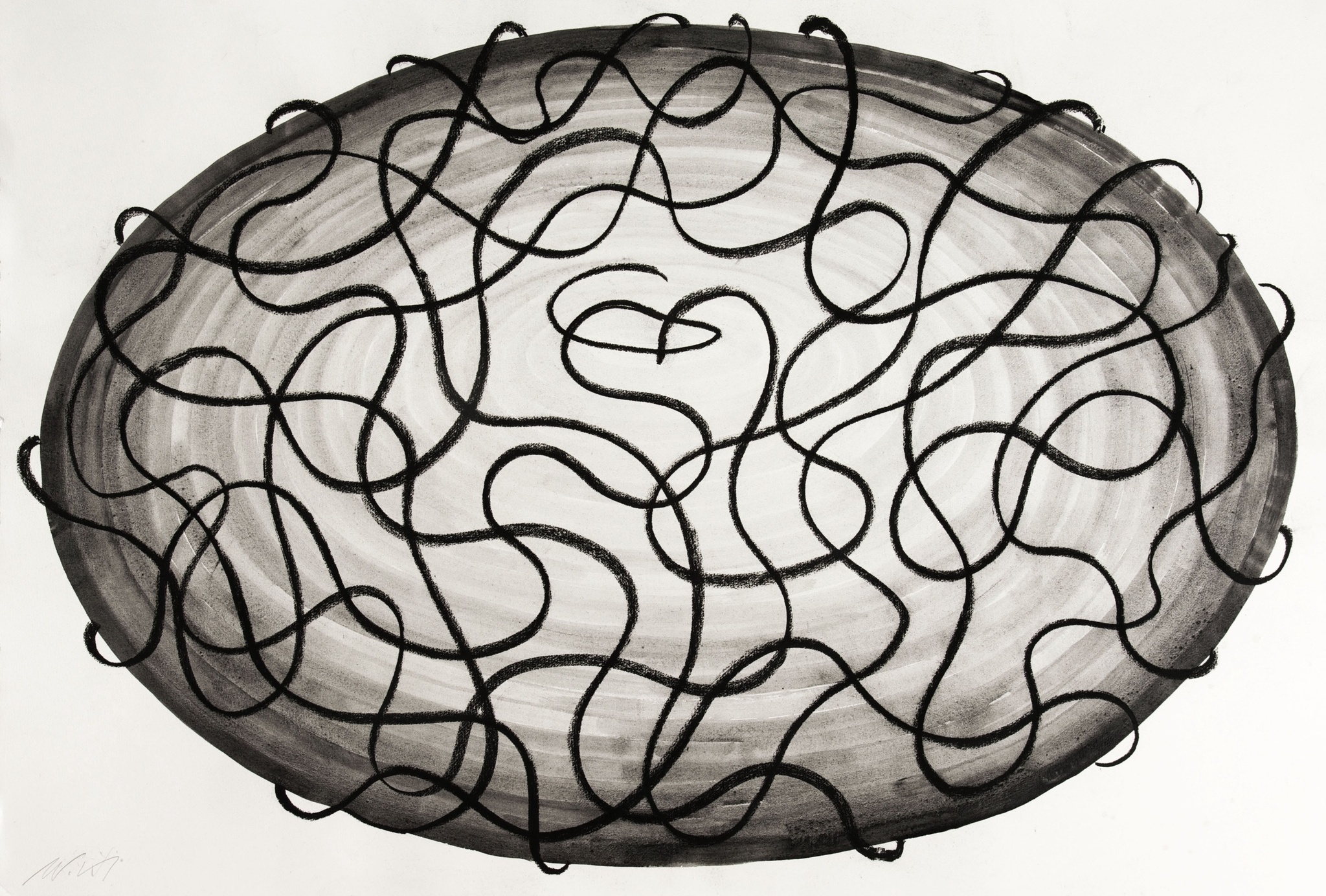
Walid Siti - The Cycle of Gilgamesh III (courtesy XVA Gallery)
What are some of the fair’s long-term ambitions and aims? Where do you see the fair five years from now?
Abu Dhabi Art will continue with its plan of being an annual event celebrating arts and culture in various areas – modern and contemporary art and design – and offering the public something new every year by introducing innovative programmes and evolving existing ones. We look forward to working with and welcoming the galleries from around the world and building long-term relationships with them. In five years, the museums will have all opened; it will be a great period … we will have an international art fair and recognised museums: that’s the long-term vision of the cultural district. The people joining us every year are very diverse – they’re not only collectors, but families, tourists, children, etc. – it’s really amazing, it’s growing. We look forward to have a growing number of all these people join us every year to celebrate arts and culture with us in Abu Dhabi.
